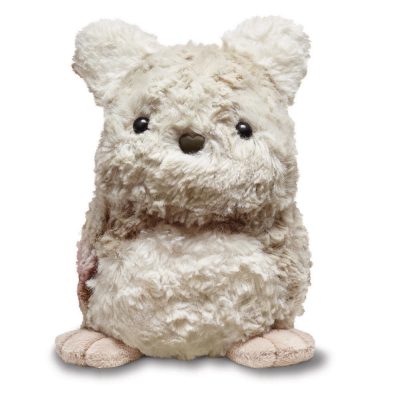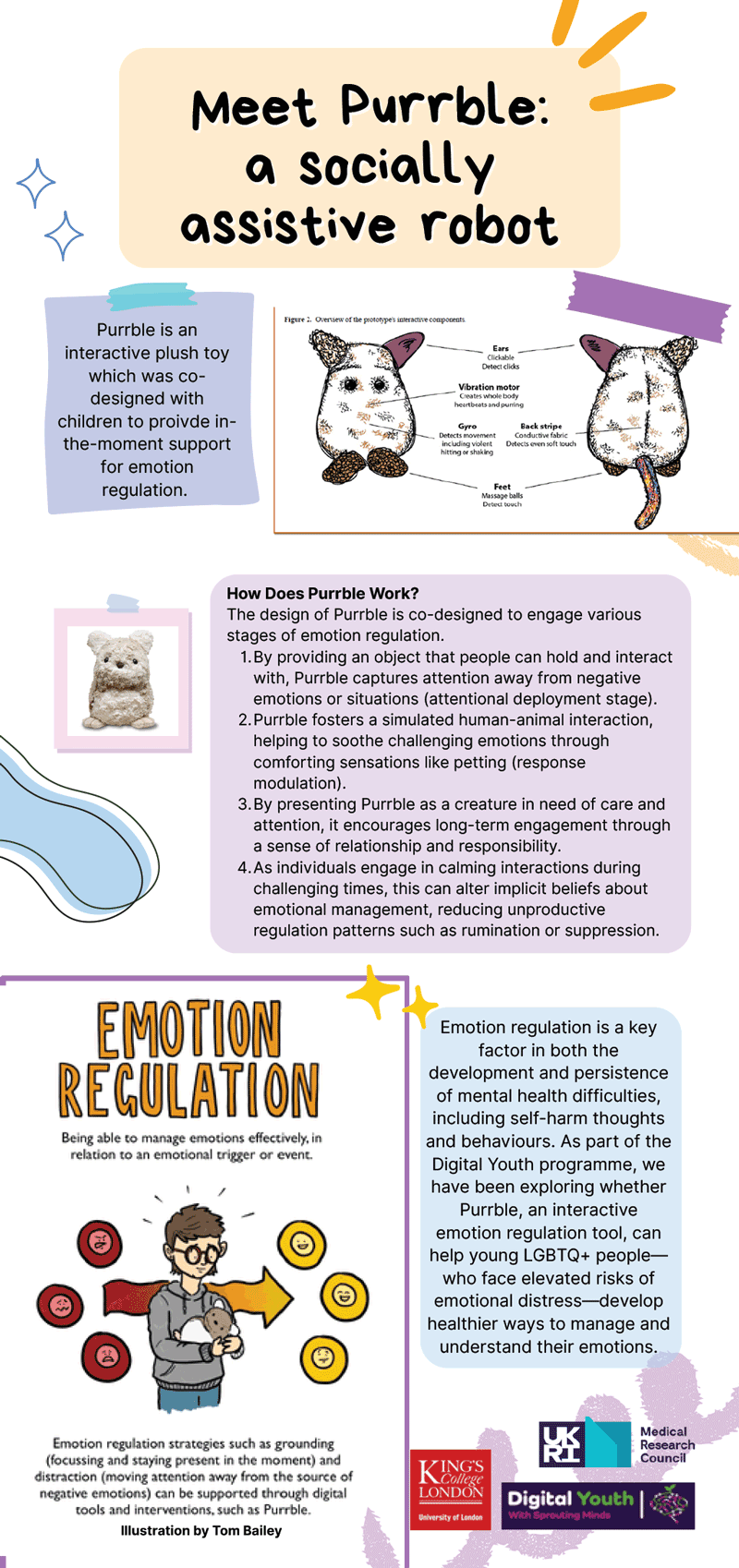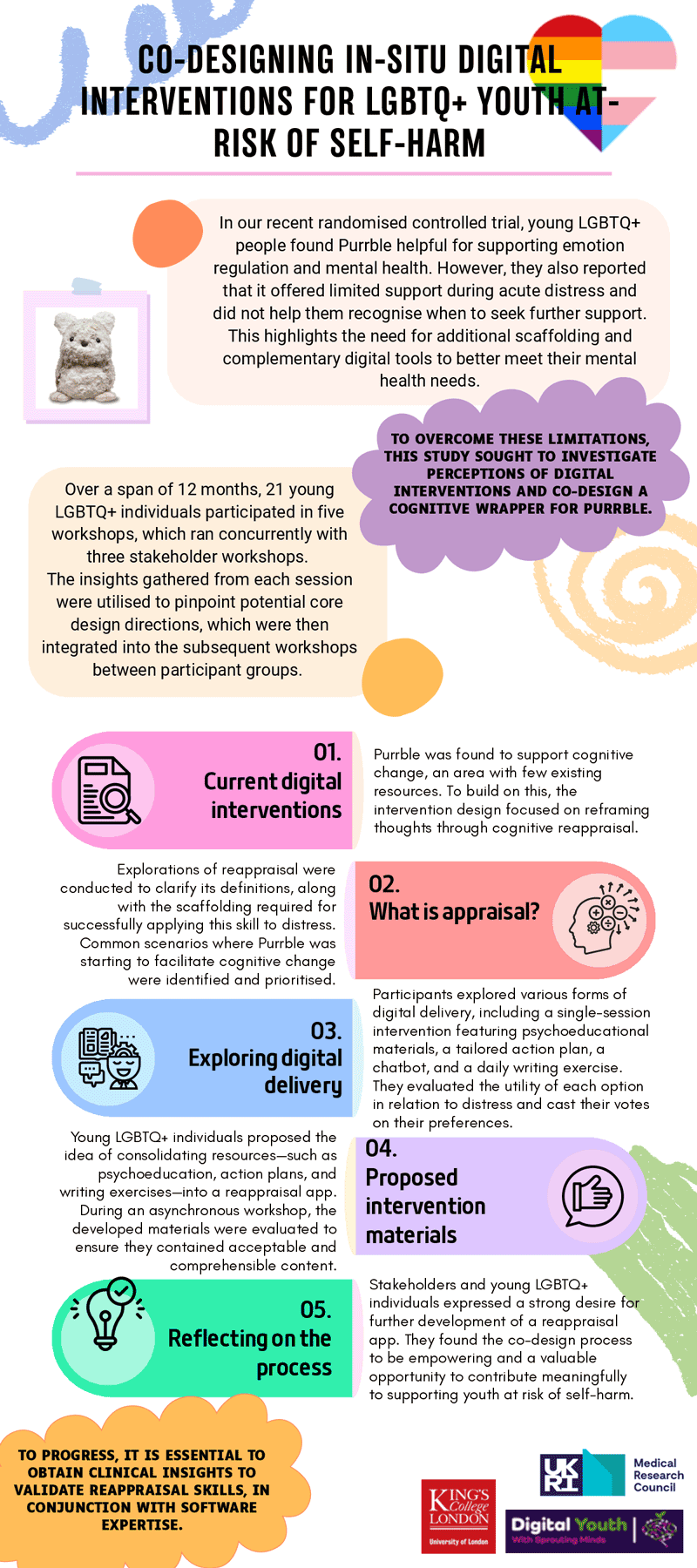Our researchers
Petr Slovak (Kings College, London), A. Jess Williams (Kings College, London), Ellen Townsend, (University of Nottingham), Marina Jirotka (Oxford University)
Young people who self-harm often have difficulties with regulating and/or coping with their emotions. Within this theme, we aim to understand whether a new kind of intervention—combining a fluffy robot called Purrble and additional resources we will co-design with young people—can be used to aid emotional regulation among youth at risk of self-harm. Given the high prevalence of self-harm among LGBTQ+ and Black, Asian and Minority Ethnic (BAME) young people, we have selected to target these two populations at first.

Purrble
Purrble has been designed to help people calm down in the moment, just by interacting with it. In other words, Purrble is aimed to support users’ emotion regulation in a non-verbal way, during the daily situations when things get tough. As such, it aims to serve both as a mechanism to de-escalate immediate distress, as well as a mechanism to ideally help develop more effective emotion regulation practices over time.
Although Purrble is very new (developed in 2019), it has been shown to have positive effects on to these young people’s emotional regulation abilities and mood – a recent study with Oxford Uni students can be seen here. It also seems to help lots of different people who buy it themselves from Amazon (read the reviews), as well as has already ended up on the cover of TIME Magazine as one of their Best Inventions of 2021 issue.
In two pilot studies, we explored whether at-risk youth engage with Purrble, and if so, how and when do they use this intervention, and what additional support we could provide to amplify Purrble’s impact. Through ecological momentary assessments, participants received brief, daily questionnaires (asking about Purrble use and context), as well as weekly questionnaires (focusing on mood, emotional regulation, self-harm). We found that Purrble was a feasible and acceptable intervention for at-risk youth, with LGBTQ+ young people being particularly receptive to it. Purrble was used to support emotion regulation practices, such as grounding, to support the de-escalation of negative emotions, self-harmful thoughts, and prevent self-harm behaviour.
Following this, we conducted a randomised control trial with young LGBTQ+ people with young people who experience self-harmful thoughts (and potentially self-harm behaviours) to understand if these seen effects of Purrble influence emotion regulation, and reduce the impact of self-harm, depression and anxiety. By splitting participants into either an active intervention condition where they received Purrble during the trial or a wait-list condition (they got Purrble at the end of the trial!), we were able to analyse whether Purrble had an effect on emotion regulation and our mental health outcomes. Purrble was shown to significantly reduce difficulties with emotion regulation and depressive symptoms! , although, we were underpowered to test this with our self-harm outcomes. However, interview data indicates that Purrble was helpful to prevent self-harmful thoughts and behaviour, so there’s more work to do to unpack these experiences.
The final stage of the work package is co-designing a digital resource to sit around Purrble to better support LGBTQ+ youth with their distress; this is being done in iterative workshops with LGBTQ+ youth who took part in our previous study, and adult stakeholders.
Working with young people
We’re really lucky to have fantastic Sprouting Minds team members supporting this project along the way; these young people have identities or experiences which are relevant to the project and help to ensure that our research is impactful and meaningful.
To date; our Sprouting Minds team members have supported us to design studies, consider recruitment options for young people, think about the measures and questions we are using, reviewed ethical applications, supported interpretation of data analysis, facilitated workshops, engaged with co-dissemination and so much more! They continue to engage with the project despite incredibly busy lives and we’re very grateful to have them alongside us.
Project partners






